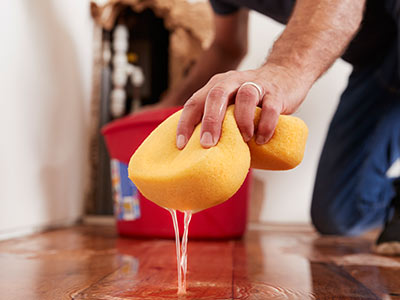19 Apr, '22
Essential Tips for Preventing Water Damage to Wooden Floors

Real wood floors are a popular choice for both residential and commercial spaces due to their natural beauty, elegance, and exceptional durability. Designed to withstand decades of use, these floors endure high traffic, heavy footfall, and various activities, including home renovations. With a high-quality finish, wood floors can remain pristine for many years. However, water remains a significant threat to their longevity.
Despite advancements in flooring technology that offer better protection against water damage, excessive moisture can still pose serious risks. Wood, being a natural material, is porous and absorbs moisture, causing it to expand. When the moisture evaporates, the wood contracts. This natural expansion and contraction can lead to issues such as warping, cupping, and gaps between floorboards if moisture levels are excessively high. Severe cases may compromise the floor’s structural integrity, resulting in loose boards or damage to the finish.
To protect your wooden floor from water damage and ensure its long-term durability, it's essential to follow preventative measures. Implementing the right strategies can help you maintain your floor's condition and avoid costly repairs or replacements.
Tips for Protecting Your Wooden Floor from Water Damage
Keep your wooden floors in pristine condition by following these essential tips. From using mats to control moisture to applying sealants and managing indoor humidity, these practices will help safeguard your floors against water damage and ensure their longevity.
-
Use Mats and Rugs: Place absorbent mats or rugs at entryways to trap moisture and debris from shoes. This will help prevent water from being tracked onto your wooden floors. Additionally, using rugs in high-traffic areas can provide an extra layer of protection.
-
Wipe Up Spills Immediately: Quickly clean up any spills or water accidents using a dry or slightly damp cloth. The faster you address spills, the less chance they have to seep into the wood and cause damage.
-
Control Humidity Levels: Maintain stable indoor humidity levels between 35% and 55% to minimise wood movement. Use a dehumidifier in damp areas and a humidifier in dry conditions to keep the environment consistent.
-
Seal Your Floor: Apply a high-quality sealant to your wooden floor to create a protective barrier against moisture. Regularly check and reapply the sealant as needed to ensure continued protection.
-
Regular Maintenance: Inspect your floors regularly for any signs of moisture damage or wear. Address any issues promptly to prevent them from worsening. This includes checking for gaps, loose boards, or signs of warping.
-
Avoid Excessive Water: When cleaning, use a well-wrung mop and avoid soaking the floor with water. Excess moisture can seep into the wood and lead to damage. Use cleaning products specifically designed for wooden floors and follow manufacturer recommendations.
-
Repair Leaks Promptly: Address any plumbing or roof leaks immediately to prevent water from reaching your wooden floors. Ensure that any areas prone to leaks are regularly inspected and repaired as necessary.
-
Use Furniture Coasters: Place coasters or protective pads under furniture legs to prevent them from scratching or damaging the floor. This also helps to reduce the risk of moisture from furniture feet transferring to the floor.
By implementing these protective measures, you can significantly reduce the risk of water damage and extend the life of your beautiful wooden floors. Maintaining your wooden flooring with care will ensure that it continues to add elegance and charm to your space for years to come.